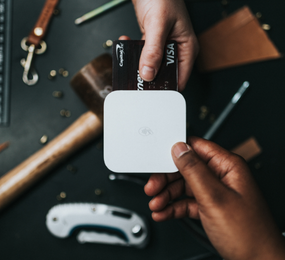The series of procedures used in the creation and distribution of a product is known as the supply chain. It includes everything involved in the full end-to-end flow of a product, from the procurement of raw materials to the product's delivery to customers, whether through retailers, businesses, or other third parties.
With 56% of organisations reporting having experienced a breach that was brought on by one of their third-party vendors, cybersecurity is a major supply-chain concern. Through digital transformation, the supply chain is becoming more and more interconnected, which increases the risk of a cyberattack. Therefore, it is imperative for businesses to effectively secure the ecosystems of their supply chains and to reduce risk as much as they can. A company's supply chain is its foundation, but even one weak link in this intricate network can have a ripple effect on all of the other suppliers who are connected to it, opening the whole operation susceptible to attack.
Adopting new ideas and the supply chain's digitization are essential to keeping it competitive. According to Accenture, businesses who have implemented advanced supply chain digitization strategies have had considerable advantages, such as a 10% decrease in lost sales, an improvement in customer satisfaction of between 5% and 10%, and a 10–20% decrease in waste and inventory.
The Internet of Things (IoT) has improved capabilities to monitor and measure productivity, making it more effective and efficient. The supply chain is the next corporate sector to be altered by digital transformation. Examples comprise:
-
Real-time Location Monitoring
-
Monitoring Situation
-
Optimization.
-
Enhance your contingency planning.
There is a complicated value chain to negotiate in order to derive business insights from data (including data being collected by devices, data being transported via gateways, and data processing in the cloud). The risk of security flaws and, eventually, hackers grows along with the value and volume of the data and insights.
Confidence in data and trust in devices must be built for there to be a safe IoT supply chain, however there are several obstacles to this. First of all, supply chains are complicated, including a variety of different devices and entities where data, goods, and services must exchange ownership without prior written agreements. Additional devices increase a company's risk exposure and present more options for hackers.
The supply chain has also been operating for many years without the IoT, which means that it is heavily dependent on antiquated technology that was not designed with security in mind. All connected devices must be secure by design as the digital transformation takes root and we get closer to a hyperconnected value chain.
To protect your business and ensure you can enjoy the benefits of a smart supply chain, you need to proactively assess and manage the risk coming from hackers. Find out about cyber security within the supply chain, on 30th - 31st may, 2023 at the Supply Chain Risk and Resilience Forum, in Berlin, Germany so you don't feel left out in the industry!
To register or learn more about the Forum please check here: https://bit.ly/3DsfWE4
For more information and group participation, contact us: [email protected]
















